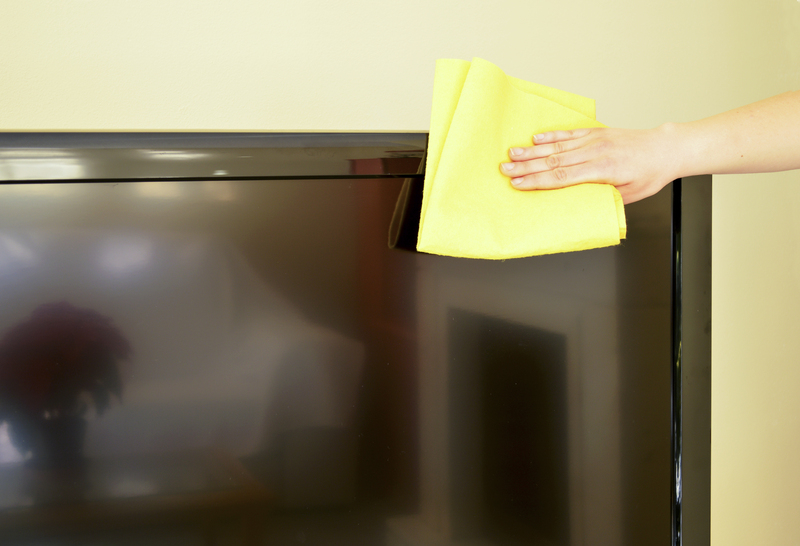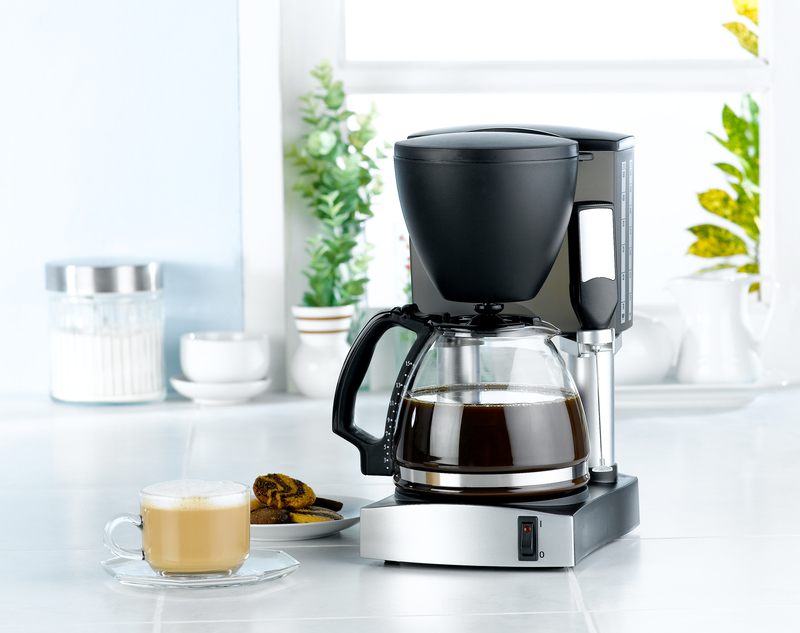Techniques for a Mold-Free and Inviting Bathroom
Posted on 26/08/2025
Techniques for a Mold-Free and Inviting Bathroom
A spotless, fresh-smelling, and attractive bathroom isn't just a matter of aesthetics--it's essential for your home's health and your daily comfort. If you've ever battled stubborn mold in the bathroom, you know how difficult it can be to eliminate it completely. Fortunately, with the right strategies, your bathroom can remain a mold-free, serene oasis all year round. This comprehensive guide explores proven techniques for a mold-free and inviting bathroom, blending prevention, cleaning, design, and maintenance best practices for long-lasting results.

Why Is Mold So Common in Bathrooms?
Before we dive into effective solutions, it's essential to understand why bathrooms are particularly susceptible to mold. Bathrooms provide the trifecta that mold spores love: moisture, warmth, and organic material (such as soap residue, hair, or dust). Showers, baths, and even hot water running from the sink can raise humidity quickly, while the confined, poorly ventilated space allows dampness to linger.
- High humidity: The primary catalyst for mold, typically from frequent bathing and poor air circulation.
- Surfaces that retain water: Tiles, grout, glass, curtains, and wood can all provide habitats for mold growth.
- Infrequent cleaning: Mold and mildew thrive when dirt and moisture are left unchecked.
Comprehensive Mold Prevention Strategies
1. Optimize Bathroom Ventilation
The first step toward a mold-resistant bathroom is ensuring effective air flow. Good ventilation removes excess humidity, directly disrupting the mold growth cycle.
- Install a powerful exhaust fan: Choose a fan rated for your bathroom's size (measured in CFM--cubic feet per minute). Run it during and after showers for at least 20-30 minutes.
- Open windows: If possible, open bathroom windows after bathing to let out moist air and welcome in fresh air.
- Use a dehumidifier: In consistently damp climates, a compact bathroom dehumidifier can help maintain optimal humidity (ideally below 50%).
- Keep doors ajar: Whenever privacy isn't a concern, leave the bathroom door open to encourage cross-ventilation.
2. Seal Surfaces and Fix Leaks
Water can slip through the tiniest cracks, leading to persistent dampness behind tiles or under flooring. Preventing this is crucial in your battle for a mold-free sanctuary.
- Inspect for leaks: Routinely check under sinks, around toilets, and beside tubs for drips or pooling water. Address any plumbing issues immediately.
- Maintain grout and caulking: Cracked or missing grout and caulk are prime entry points for water. Reseal with a mold-resistant product as needed.
- Waterproof vulnerable areas: Use waterproof paint or sealant on walls, ceilings, and floors--especially in bathrooms with limited ventilation.
3. Prioritize Regular Cleaning Habits
Vigilant cleaning is vital for a mold-free and inviting bathroom. Mold can establish itself in as little as 24-48 hours in moist conditions.
- Clean wet zones frequently: Focus on showers, tubs, tile grout, sinks, and taps. Use a bathroom cleaner with mold-fighting agents like hydrogen peroxide or vinegar.
- Dry all surfaces: After each use, squeegee shower walls, wipe down counters, and hang towels and mats to dry.
- Don't forget hidden spots: Check behind the toilet, inside cabinets, and around window frames.
Specialized Cleaning Techniques for Mold Prevention
Natural Cleaning Solutions
If you prefer to avoid harsh chemicals, you can create potent anti-mold solutions with ingredients you probably already have at home:
- White vinegar: Undiluted, it kills most mold species on contact. Spray and leave for an hour before wiping clean.
- Baking soda: Mix with water for an abrasive paste to scrub away stubborn mold while deodorizing surfaces.
- Hydrogen peroxide: A 3% solution will destroy mold and mildew. Spray it on, let sit, then rinse.
- Tip: Always spot-test a small area first to ensure the solution doesn't damage your surfaces.
Best Practices for Tile and Grout Care
- Deep-clean grout lines: Mix baking soda and water to form a paste, spread it along the grout, then spray with vinegar. Once it stops foaming, scrub with a stiff brush and rinse.
- Apply grout sealer: Every six months, rejuvenate your grout's water resistance with a high-quality sealer--this inhibits water penetration and mold rooting.
Textile Care
- Launder regularly: Wash shower curtains, towels, and mats at least weekly using hot water. Avoid leaving damp textiles wadded on the floor or in the hamper.
- Choose fast-drying materials: Microfiber and bamboo towels dry quickly, reducing the mold risk.
Bathroom Design: Encouraging an Inviting, Mold-Free Space
Material Selection
A key principle for maintaining a mold-free bathroom environment is to use materials resistant to moisture and easy to clean:
- Porcelain or ceramic tile: Dense and nonporous, perfect for floors and walls.
- Tempered glass: Easy to wipe down in shower enclosures or as decorative elements.
- Solid-surface countertops: Seamless and water-resistant, ideal for vanities.
- Vinyl or luxury vinyl plank (LVP) flooring: Affordable and impervious to moisture.
Smart Layout for Dryness
- Good drainage: Sloped shower floors and strategically positioned drains help prevent puddling and prolong drying.
- Wall-mounted vanities: Elevating cabinetry makes cleaning floors easier and prevents water pooling at the base.
- Open shelving: Reduces hidden, hard-to-clean surfaces, increasing airflow around stored items.
Lighting and Decor
- Maximize light: Well-lit bathrooms dry faster. Combine natural light with powerful overhead and vanity lighting.
- Choose mildew-resistant decor: Opt for water-resistant artwork and accessories. Avoid framed prints or fabrics prone to trapping moisture.
Everyday Habits for a Mold-Free and Inviting Bathroom
Daily Practices
- Ventilate after every use: Acquaint your household with the importance of running the fan or opening a window each time someone uses the shower or bath.
- Keep surfaces clutter-free: Fewer items on counters and in the shower mean fewer places for mold to hide and are easier to clean.
- Wipe down regularly: Make a habit part of your routine. A quick daily wipe of damp surfaces goes a long way in preventing residue and moisture build-up.
Weekly and Monthly Tasks
- Disinfect touchpoints: Clean faucets, handles, toilet levers, and door knobs with a disinfectant spray.
- Inspect for early mold: Spot signs of mold growth in caulk, on grout, or under sinks. Addressing these promptly prevents larger infestations.
- Wash and dry textiles: Refresh towels, shower curtains, and bath mats to remove concealed moisture and bacteria.
Advanced Tips: Mold-Resistant Bathroom Upgrades
Invest in Mold-Resistant Products
Building a mold-resistant bathroom is easier now than ever, thanks to advances in building materials and home technology.
- Mold-resistant drywall: Also known as "greenboard," this is specifically engineered for use in areas with high humidity.
- Anti-microbial paints and caulks: These inhibit the growth of mold, mildew, and bacteria, providing a protective barrier for walls and fixtures.
- Fogless mirrors and glass: Specialty coatings make mirrors stay clear and reduce water spotting and streaking, deterring mold adhesion.
Update Your Exhaust Fan
- Smart fans: Humidity-sensing fans automatically activate when the air becomes moist, ensuring optimal ventilation without manual switching.
- Sizing for your space: Don't skimp on CFM. Oversized fans can be noisy, but an undersized fan won't clear the humidity. Measure your bathroom and calculate the right fan for its volume.
Consider Touchless and Smart Bathroom Accessories
- Touchless faucets: Reduce dirt and bacteria transfer, minimizing mold's food sources.
- Smart humidity monitors: Easy-to-read displays help you track and adjust levels before they become a mold problem.
What to Do If Mold Has Already Grown
Despite your best efforts, occasionally mold can appear, especially in hidden places. If you notice speckles or streaks on tiles, ceilings, or around fixtures:
- Address the root cause: Find and fix leaks; check for blocked vents or overly wet textiles.
- Clean away small infestations: Apply a suitable cleaning solution (see above), scrub, and rinse thoroughly.
- Replace porous materials: If mold has colonized grout, caulk, drywall, or insulation, it's best to remove and replace the affected materials.
- Call a professional: For large infestations (over 10 square feet), persistent musty odors, or black mold (Stachybotrys chartarum), hire a mold remediation specialist.

FAQ: Maintaining a Mold-Free and Inviting Bathroom
How often should I clean the bathroom to keep it mold-free?
At minimum, high-moisture surfaces should be cleaned weekly, with a brief daily wipe-down for best results. Grout and vent fans should be checked and cleaned monthly.
Which areas are most prone to mold in the bathroom?
Focus on shower corners, grout lines, ceilings above showers, under sinks, and behind toilets--these stay dampest and can be overlooked during routine cleaning.
Can I use essential oils to prevent bathroom mold?
Some essential oils (like tea tree or eucalyptus) have antifungal properties and can be added to vinegar-based cleaning sprays. They add a pleasant scent, too, supporting an inviting bathroom environment.
Is keeping plants in the bathroom a bad idea?
Certain plants, like Boston Fern, Aloe Vera, and Orchids, thrive in humidity and can even help absorb airborne moisture. However, overwatering and poor drainage could add to mold risk, so choose pots and soil wisely and monitor them closely.
Conclusion: Your Path to a Mold-Free and Inviting Bathroom
A beautiful, welcoming bathroom free of mold is achievable with mindful design choices and consistent routines. By integrating ventilation, cleaning, smart upgrades, and proactive maintenance, you'll protect your health, your investment, and the comfort of your home. Whether you're tackling a stubborn mold problem or simply striving for a fresher, more inviting space, these bathroom mold prevention techniques will help you enjoy your sanctuary in confidence.
Remember: Consistency is key--small daily efforts can prevent big mold problems, keeping your bathroom both inviting and safe for the long run.




